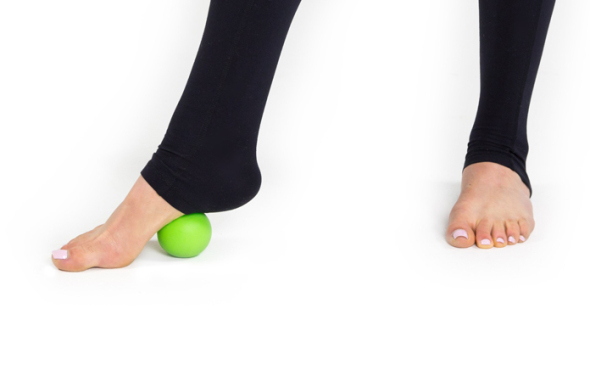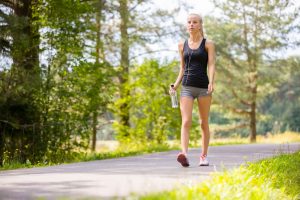Biohacking Your Body with Barefoot Science
We are all on the eternal hunt to looking good, moving well and feeling young – however as responsibilities (job, school, family, friends) increase the time allocated to health and fitness often decreases. Surprisingly we expect the same results with less time in the gym but is this really even possible?
Perhaps it is.
Enter…..biohacking!
What is biohacking?
Biohacking, as the name suggests, is “hacking” or finding a way to more efficiently manipulate human biology. This can include areas of sleep, nutrition, mental health, strength, recovery.
If you are new the concept of biohacking – please think of this as a positive thing! Don’t get wrapped up thinking it is a mad scientist in his garage implanting computer chips into his own body.
Think of biohacking as a empowering concept which allows one to enhance or improve the efficiency of different aspect of health. It means taking ownership of your body and the aging system.
Can biohacking apply to fitness?
Absolutely!
In the case of fitness some examples of biohacking include drinking caffeine to give you energy during a workout. Or taking branch chain amino acids after a workout to enhance muscle repair and hypertrophy. Or using kinesiology tape to enhance proprioceptive stimulation and muscle activation.
Seems less mad scientist-y doesn’t it?
One area of biohacking that I am particularly a fan of is the application of barefoot science to improve your workout. As I mentioned at the start of this blog the one thing we never have enough of is TIME.
By integrating barefoot training into your workout you will hack your way into a more efficient workout allowing you to achieve faster fitness goals. Below are my top 4 biohacks integrating barefoot science.
Biohack #1 – Barefoot release to improve your balance

Next time you hit the gym start your workout start with just 5 minutes of trigger point footrelease the bottom of the foot. A 2015 study showed that 5 minutes of manual trigger point release was associated with an immediate improvement in single leg stability and postural control.
Since having someone do the trigger point release isn’t efficient we’ll instead use RAD Rounds by RAD Roller. These small rounds of different sizes can be used to apply pressure to different intrinsic muscles of the foot. I recommend 5 minutes in the morning, evening and before exercise.
View video below
Biohack #2 – Barefoot whole body vibration to enhance micro-circulation and tendon strength
In the world of proprioception whole body vibration is one of the most efficient ways to stimulate the nervous system. Since our foot is also the gateway to proprioceptive stimulation I recommend doing your WBV activation barefoot and using PowerPlate which is a multi-planar harmonic vibration platform.
A 2007 study by Lohman showed that just 3min of WBV at 30Hz enhanced skin, nerve and tendon micro-circulation resulting in enhanced tendon tensile strength and decreased arterial stiffness. All of which is a very powerful response before any workout.
Learn more about WBV and PowerPlate at powerplate.com
To learn more on this topic you can view the following webinar below:
Biohack #3 – Improve your core strength with barefoot foot to core sequencing
The core. The center of stability and the center of power. When it comes to any dynamic movement or exercise – core strength and stability are critical to the way force is generated or transferred through the human body.
The foot. The base of stability and only contact point between the body and the ground. Studies have shown that it is more efficient to strengthen the core via the foot in what EBFA calls “foot to core sequencing”. The access into foot to core sequencing is via an exercise called short foot.
To learn more about short foot and how to integrate it with exercises please see below:
Biohack #4 – Improve your balance with small nerve proprioception
Postural control and dynamic stability require the integration of four input systems – visual, vestibular, joint proprioceptors and plantar foot skin. Of these four one of the most important but often overlooked systems is the skin on the bottom of the foot.
The skin on the bottom of the foot contains thousands of small nerve proprioceptors all of which are sensitive to different stimuli. One of the most important stimuli coming into the foot is vibration (see WBV above). We use vibration not only to know how hard our foot is striking the ground but also in the maintenance of dynamic balance.
As soon as we put on our shoes our nervous system inherently becomes slower. This delayed neuro stimulation of the foot is small or micro which means it is hard to detect by the average client or patient – however it is happening. Accumulatively this results in micro-trauma and micro-compensation.
To biohack your nervous system whenever you are barefoot training integrate small nerve plantar stimulation with Naboso Technology. Whenever performing barefoot exercises such as short foot or any foot to core sequencing this is the perfect opportunity to pull out your Naboso Barefoot Training Mat.
If you want to bring this stimulation to your shoes, Naboso Technology also makes small nerve proprioceptive insoles which have been shown to improve postural control and stability
Dr. Emily Splichal, Podiatrist and Human Movement Specialist, has dedicated her medical career towards studying postural alignment and human movement as it relates to foot function and barefoot training. She is the Founder of the Evidence Based Fitness Academy, offering continuing education with a focus on foot fitness and barefoot training. Courses included Barefoot Training Specialist®, Barefoot Rehab Specialist® and BARE® Workout Certifications for health and wellness professionals.
Originally printed on the Barefoot Strong Blog. Reprinted with permission from Dr. Splichal.


 You may have heard that blueberries are brain food. What makes blueberries so beneficial is that they are packed with polyphenols or compounds unique to plants. Polyphenols which can also be found in coffee, dark chocolate and spices carry some of the strongest anti-oxidant and anti-inflammatory properties.
You may have heard that blueberries are brain food. What makes blueberries so beneficial is that they are packed with polyphenols or compounds unique to plants. Polyphenols which can also be found in coffee, dark chocolate and spices carry some of the strongest anti-oxidant and anti-inflammatory properties. Watermelon is one of my favorite pre-workout drinks due to its effect on vasodilation and circulation! The vasodilation effect of watermelon is found in the amino acid L-Citruline which is a precursor to nitric oxide (think Viagra!).
Watermelon is one of my favorite pre-workout drinks due to its effect on vasodilation and circulation! The vasodilation effect of watermelon is found in the amino acid L-Citruline which is a precursor to nitric oxide (think Viagra!).
 When was the last time you walked? I mean REALLY walked?
When was the last time you walked? I mean REALLY walked? The Optimal Stride for Fascial Fitness
The Optimal Stride for Fascial Fitness